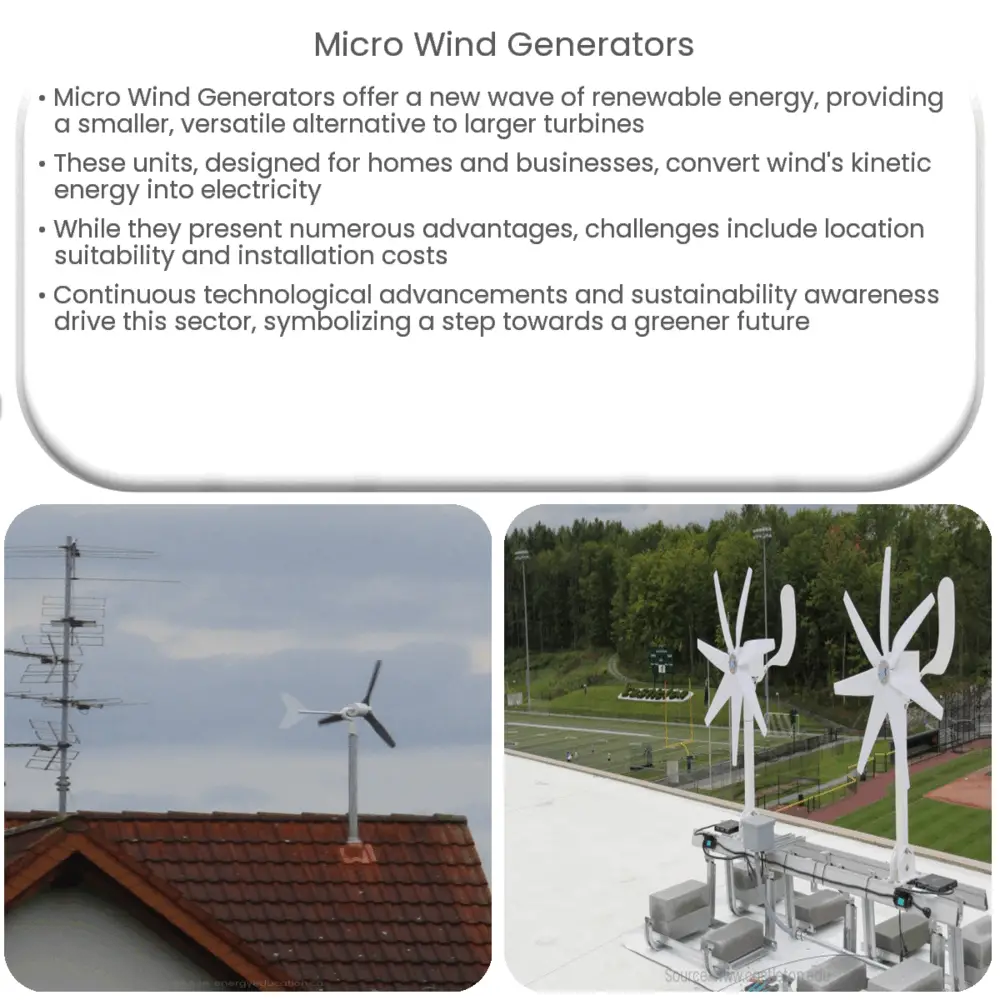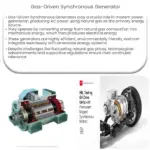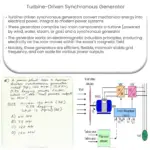Explore the world of Micro Wind Generators – their operation, applications, advantages, challenges, trends, and future prospects.

Understanding Micro Wind Generators
A new wave of renewable energy solutions is being driven by the growing need for sustainable and efficient power sources. Among the pioneers in this field are Micro Wind Generators, a smaller, more versatile version of their colossal counterparts. These miniaturized wind turbines offer a plethora of benefits and are creating a significant impact on the landscape of renewable energy.
What are Micro Wind Generators?
Micro Wind Generators, often termed micro wind turbines, are small-scale wind power units designed for individual homes, businesses, or even mobile uses such as boating and camping. Typically, these generators have a power capacity of less than 1 kW to 1.5 kW. They convert the kinetic energy of wind into electrical energy, which can be utilized immediately or stored for later use.
The Principle of Operation
-
Like traditional wind turbines, Micro Wind Generators operate on the principle of wind power. When wind flows across the blades of the turbine, it creates a lift, causing the blades to turn. The rotation of these blades drives a shaft inside the turbine connected to a generator, which subsequently produces electricity.
-
This electricity can then be stored in a battery system or directly used, depending on the specific requirements of the setup. Some systems may also be connected to the grid, allowing excess power to be sold back to the electricity company.
Applications of Micro Wind Generators
-
Home Use: As a decentralized energy source, Micro Wind Generators can significantly reduce reliance on the grid, leading to significant savings on energy bills. They can be installed in the backyard or on the rooftop, given sufficient wind flow.
-
Remote Locations: In off-grid locations or places with unreliable power supply, these turbines can provide a consistent and reliable source of electricity.
-
Businesses and Public Buildings: These generators are increasingly being used in commercial buildings, farms, schools, and hospitals to supplement their power supply and reduce their carbon footprint.
The Advantages of Micro Wind Generators
Micro Wind Generators offer a series of advantages, including environmental benefits, energy independence, and financial savings. The ability to harness wind power on a smaller, more localized scale allows users to tap into renewable energy sources in ways not previously possible. However, there are also challenges associated with this technology, which will be discussed in the following section.
Challenges Associated with Micro Wind Generators
Despite the numerous advantages, there are some challenges associated with the deployment of micro wind generators. One significant issue pertains to the location; not all sites have sufficient and consistent wind speed to make the installation of these systems practical. This technology tends to be more efficient in rural or coastal areas where wind patterns are more predictable and uninterrupted.
In addition, micro wind generators need to be correctly sized and installed to ensure their efficacy. The height, rotor diameter, and design are all critical factors that determine the power output of a micro wind turbine. Also, as with any renewable energy system, there are upfront costs associated with the purchase and installation of these systems. However, these costs can often be offset by the long-term energy savings and potential government incentives.
Emerging Trends and Future Prospects
The micro wind generator market is continuously evolving, driven by advancements in technology and increased awareness about renewable energy. A significant trend in this sector is the development of vertical-axis turbines, which can operate efficiently at lower wind speeds compared to traditional horizontal-axis designs.
-
Additionally, hybrid systems that combine micro wind generators with other renewable energy sources like solar power are becoming more popular. These systems can ensure a more consistent energy supply and further enhance the self-sufficiency of individual households or businesses.
-
Future prospects also look promising, with ongoing research focusing on improving the efficiency, reducing the noise, and minimizing the environmental impact of micro wind turbines. Innovations in design and materials are expected to make these generators even more accessible and efficient in the future.
Conclusion
In conclusion, Micro Wind Generators present an exciting opportunity in the realm of renewable energy, providing a viable alternative to traditional power sources. While there are challenges to overcome, continuous advancements and increased sustainability awareness are driving the growth of this sector. As the world continues to strive for greener, more efficient energy solutions, micro wind generators stand out as a significant step in the right direction. They not only symbolize technological advancement but also our collective responsibility towards building a sustainable future.




